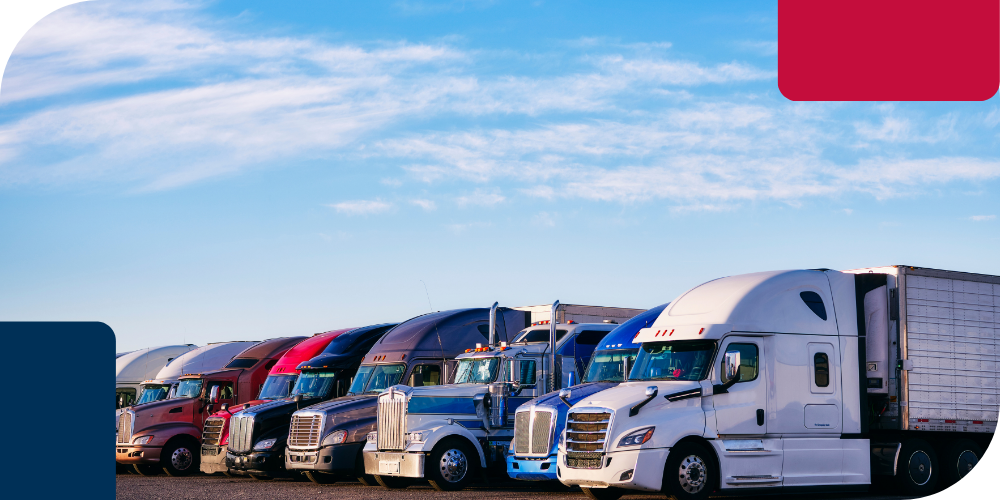A 5-step cost-benefit analysis model for trucking

In today's competitive transportation landscape, trucking companies face constant pressure to maintain profitability while meeting customer demands. A thorough cost-benefit analysis is crucial for making informed decisions about investments, route expansions, or operational changes. This process helps companies evaluate potential opportunities, mitigate risks, and optimize their resources effectively.
Let's explore a 5-step model for conducting a cost-benefit analysis in the trucking industry:
1. Define the scope and objectives
The first step is to clearly outline what you're analyzing and why. Are you considering purchasing new vehicles, expanding into a new market, or implementing a new technology? Defining your objectives helps focus the analysis and ensures you gather relevant data.
Why it's necessary: A well-defined scope prevents scope creep and keeps the analysis targeted. It also helps in identifying all stakeholders who may be affected by the decision.
How it informs the next step: Clear objectives guide the data collection process, ensuring you gather information that's directly relevant to your analysis.
2. Identify and quantify all costs
List all potential costs associated with the proposed change or investment. This includes obvious expenses like equipment purchases, as well as hidden costs such as training, maintenance, or potential disruptions to existing operations.
Why it's necessary: Comprehensive cost identification prevents surprises later and provides a realistic picture of the total investment required.
How it informs the next step: A thorough understanding of costs allows for more accurate projections of potential benefits and return on investment.
3. Estimate and quantify benefits
Determine all potential benefits, both tangible (e.g., increased revenue, reduced fuel costs) and intangible (e.g., improved driver satisfaction, enhanced brand reputation). Where possible, assign monetary values to these benefits.
Why it's necessary: Quantifying benefits allows for direct comparison with costs and helps justify the investment to stakeholders.
How it informs the next step: Clear benefit estimates are essential for calculating the net present value and other financial metrics in the next step.
4. Perform financial analysis
Use the cost and benefit data to calculate key financial metrics such as:
- Net Present Value (NPV)
- Internal Rate of Return (IRR)
- Payback period
- Return on Investment (ROI)
Why it's necessary: These metrics provide a standardized way to evaluate the financial viability of the proposed change or investment.
.png?width=817&height=434&name=_-%20visual%20selection%20(5).png)
How it informs the next step: The financial analysis results form the foundation for the final decision-making process.
5. Evaluate risks and make a decision
Assess potential risks that could impact the success of the project. Consider factors like market changes, regulatory shifts, or technological advancements. Use this information, along with the financial analysis, to make an informed decision.
Why it's necessary: Risk assessment helps identify potential pitfalls and allows for the development of mitigation strategies.
Conclusion: This step synthesizes all previous information to guide the final decision.
Best practices for cost-benefit analysis in trucking:
- Use reliable data sources: Leverage industry benchmarks, historical company data, and market research to ensure accuracy in your projections.
- Consider multiple scenarios: Develop best-case, worst-case, and most likely scenarios to account for market volatility and unforeseen circumstances.
- Involve cross-functional teams: Include input from operations, finance, and drivers to get a comprehensive view of potential impacts.
- Update regularly: Treat your cost-benefit analysis as a living document, updating it as market conditions change or new information becomes available.
- Factor in non-financial benefits: While financial metrics are crucial, don't overlook intangible benefits that can provide long-term value.
- Use technology: Leverage data analytics and modeling software to improve the accuracy and speed of your analysis.
- Consider the long-term impact: Look beyond immediate returns and consider how decisions align with your company's long-term strategic goals.
By following the 5-step model outlined above and adhering to the best practices, executives in trucking companies can make more informed decisions, optimize their operations, and maintain a competitive edge in the ever-evolving transportation industry.
